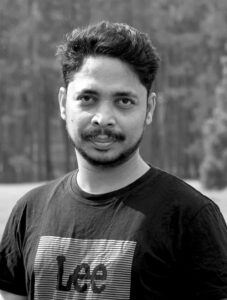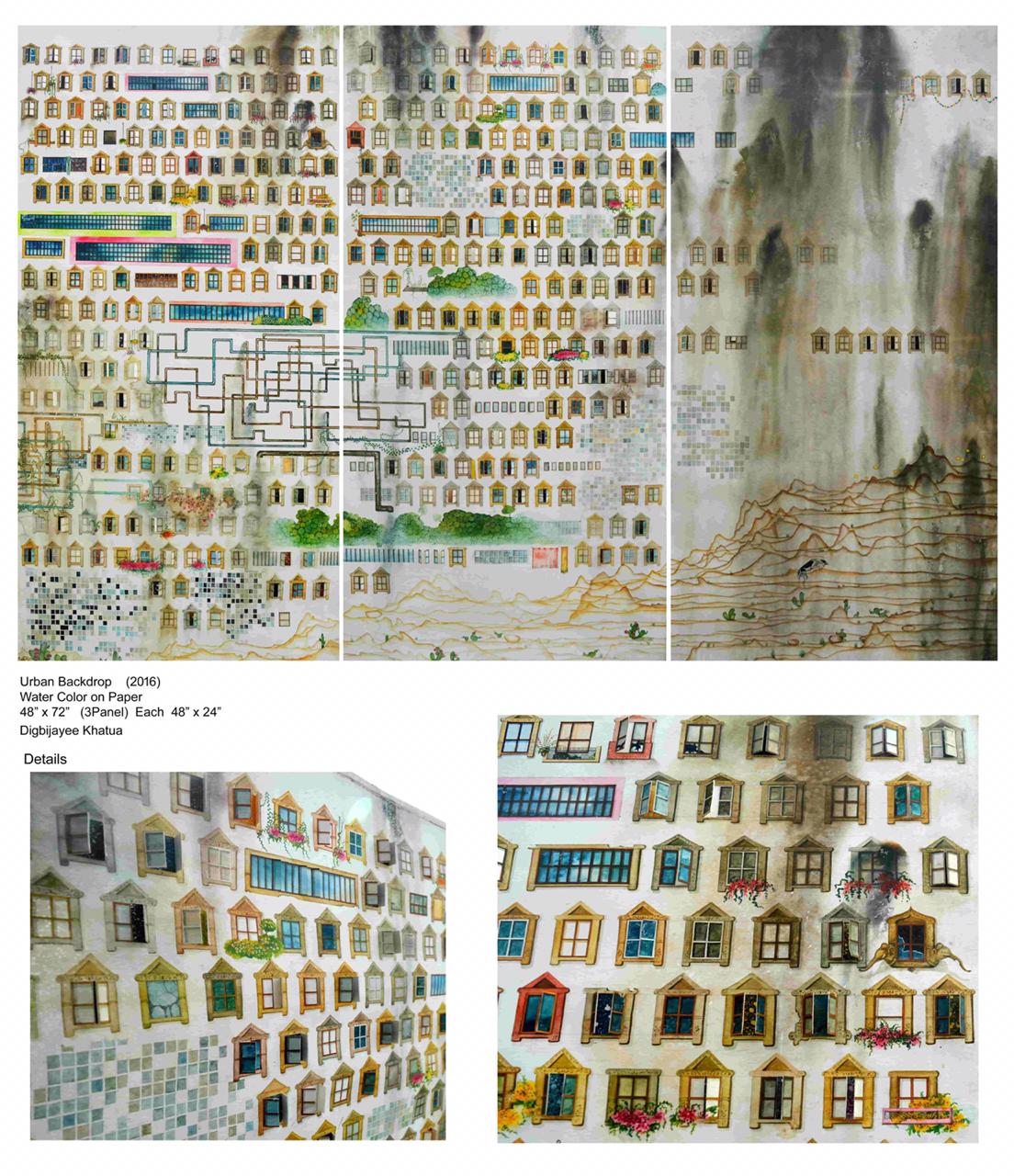
Digbijayee Khatua (b.1990 ), through his practice, pays homage to the nature that we can find in even the most urban of areas. His appreciation for nature came at a young age, because his hometown of Kendrapada in Orissa was thrust in the middle of it. However, having moved to Delhi almost a decade ago, he has managed to seek out and observe nature even in the most mundane cityscapes. He does not view nature and urban as conflicting ideals or geographies. As humans, his practice denotes that we crave nature no matter where we are, and he has been able to capture this human longing for nature.
1. Can you please tell me a little about your journey into a full-time art practice
I am from a rural area in Orissa. My father is a history teacher, and my mother is a primary school teacher. I’m from a very sensitive and spiritual family, my area is full of nature, and that’s why I adapt to nature. There’s crocodile and turtle farming and there’s a tiger, leopards here also.
After completing my schooling I shifted to Bhubhaneshwar. I did my Bachelor’s there in BK College of Art and Craft. I started doing traditional Oriya painting and ceramics, and natural colouring. Then I shifted to the professional arts college and got into watercolour, which was very different. My background is traditional art, in masters I did contemporary art and learnt how to mix the two.
In 2012 I finished my bachelors and shifted to Delhi. After a year in Delhi, I joined the College of Art for my Masters in 2013.
2. Did you always want to do art?
My father had a friend who went to art college, and since I was 8 or 9 years old I knew I wanted to do art. When I came to Delhi I realised I needed to do a masters.
3. What would you say has been the highlight of your career so far?
I was happiest in my Bachelors. Now I spend all day working from 9 in the morning to 1am. I don’t like to leave my studio. I like to be engaged with my work. When I got admission to the College of Art I was very happy, same for when I got awards in colleges and when I passed. There are many small moments of happiness, like also my residency with Khoj. I enjoy more when I am in the process of making works, not when they are completed. I am more engaged with incomplete works.
4. What are some influences that can be found in your work?
My practice is influenced by my shift from Orissa to Delhi, changing landscapes, recording my observations. I am also influenced by miniature paintings and trying to explore the miniature form in the contemporary form. It’s a mix of urban and rural.
In Orissa I connect with nature, in Delhi I connect with the city. My work is landscape type, it’s both greenery and buildings. Because my father is a history teacher my work is connected with the history of Delhi also.
In Delhi, the machine is the main part of people. In Delhi when I came on my balcony I saw people keep natural things on the balcony to connect with nature like flower pots. In Orissa you are in the nature only so you don’t need to do that extra step. The common ground between the two cities is that everyone wants to connect with nature no matter where you are. 
5. Is your practice a criticism of urbanism or an appreciation, or is a neutral observation?
It’s a neutral observation. I only observe, even in Orissa there is a lot of development. As an artist I am neutral, whatever happens will happen. I just explore my feelings.
6. What are your feelings about this expansion and development?
When things develop something new comes and it can be interesting. I have an old painting titled ‘City of God’ which depicted a Hanuman statue that was outside the city in Orissa. After a few years when I visited it was in the middle of the city. This was because of the growth of the city, the whole landscape changed. 
7. What is some advice that you would give to anyone collecting your work? What would you tell someone who asks why should I collect your work?
To differentiate my work I try to make sure my work has longevity. I use good material that last long.
Also, I have always wanted to be an artist, I’m never going to stop so anyone collecting should be reassured that I will continue to create.
I also don’t negatively represent art, I want positive feelings to be conveyed from my work, so when someone buys my art it conveys positivity in their house.
8. There are some questions that I ask all artists, first is do you have a favourite colour?
I don’t really have a favourite colour. I do end up using a lot of brown and blue and yellow in my works. They automatically come in my mind, so maybe they are my favourite.
9. Do you have a favourite artwork by you?
I have many, what I like now I may not in 2 years. When I was in the Delhi College of Arts, Tao Art Gallery bought one of my works, ‘City of Mirror’ that I was apprehensive to sell, because I liked it so much, but I was in college and needed the money. I even told them that when I can afford it I might buy it back. 
10. What is your favourite artwork by any other artist?
I like works by Atul Dodiya and Gigi Scaria. I don’t have a particular favourite. I remember this one work of a lift by Gigi Scaria that was displayed at KNMA that I really liked.
11. Finally, what is one word that you would use to define your practice
Detailing.
[Note: parts of this interview have been translated from Hindi into English by the interviewer.]
All images have been used with the permission of the artist.
